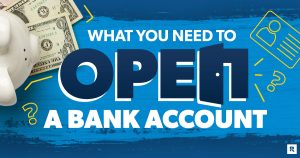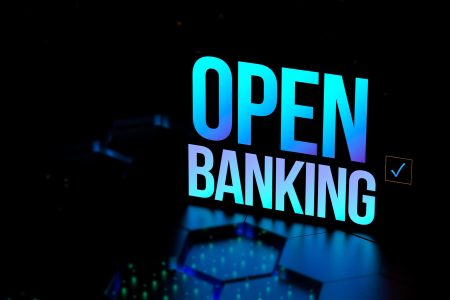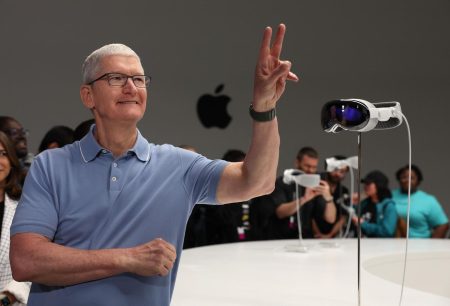I remember waiting for the train in Boston a couple of years ago when I saw an ad for an online-only bank. I was skeptical. How could you have a bank without physical branches? I felt more secure at a traditional institution, which had a brand name I could trust more or less.
But since I moved to a place where my bank didn’t have branches, I had a set of needs it could no longer meet, including fee-free access to my cash when I needed it. Before I opened my online-only account, I was constantly facing a barrage of fees, including ATM surcharges and monthly maintenance fees. As such, I knew I had to make a change, even if I was wading into unknown waters.
Fast forward to today and I haven’t had a single problem with my online bank account. Not only do I have peace of mind because it’s insured by the Federal Deposit Insurance Corp. (FDIC), but I’ve also had a better experience with my online account, which fits my financial needs compared with my previous brick-and-mortar bank, of which I still have an account.
If you’re like me and you’ve recently moved outside of your bank’s primary footprint, or you’re looking for an institution where you can consolidate your finances without constantly shelling out money to pay for miscellaneous bank fees, you may stand to gain from opening an account at an online-only bank. Even if this isn’t the case for you, the same may apply: moving to an online bank could save you money.
Here are the three reasons I decided to open an account at an online-only bank.
1. No fees and ATM rebates
Checking accounts can be costly. ATM fees have risen in recent years, averaging $4.73 per transaction, according to Bankrate data. And the same goes for overdraft and non-sufficient funds fees, which average $26.61 and $19.94, respectively, according to Bankrate’s 2023 checking and ATM fee study. Add monthly maintenance fees to the equation and you could be shelling out some serious cash.
Because the checking and savings accounts I was interested in were free to open and came without monthly maintenance fees, I felt I had nothing to lose. If I didn’t find myself using the accounts for whatever reason, I knew I could close them at any time, and I wasn’t going to sink money into them via monthly fees.
Moreover, I was pleasantly surprised with the ease of opening the accounts, including a joint checking account, which took me less than 30 minutes. Within weeks, I received my debit cards in the mail.
What’s more, I ended up saving money with my accounts, because I get rebates up to a certain amount per month each time I withdraw money from an out-of-network ATM. In contrast, the larger institution I still bank at (which doesn’t have branches near me) charges me a fee each time I withdraw from an out-of-network ATM, in addition to getting hit with a fee from the ATM provider.
2. A high-yield savings account
Adding to the fact that the accounts are free to open, online-only banks tend to offer higher annual percentage yields (APYs) on savings products compared with traditional institutions. This was the primary reason I needed a new bank, as I was earning next to nothing with my previous accounts.
For comparison, if you saved $5,000 in an account that pays 0.01 percent APY, you’d earn $2.50 at the end of five years. In contrast, an account that pays 5 percent APY would earn more than $1,300 over those same five years.
As a result of opening this online account, I earn nearly 420 percent more a year on the money I’ve stashed in the savings account (from 0.01 percent APY to 4.20 percent APY). It’s a sizable difference, easily noticeable every month, when I see how much interest has been credited to my account.
3. Consolidating my banking under one roof
In an era of persistent inflation, I’ve found myself having to transfer money out of my savings account more than ever. I buy much less than I did just three years ago, yet somehow spend even more today.
If you need those funds fast without incurring even more fees, you’ll need to have your checking and savings accounts under the same institutional roof. And that’s exactly what I did by opening an online account.
By consolidating my banking, I can instantly transfer money from my high-yield savings account to my checking account (or vice versa), and the funds are ready to use.
The alternative is to pay a wire transfer fee for a same-business-day transfer, or wait at least two days (sometimes more) for funds to show up in my online account via a standard ACH transfer. This waiting time is relatively standard, so opening a checking account at the same place where I have a high-yield savings account has been monumentally helpful.
How to open an account at an online bank
First, you’ll want to find an online bank that’s the right fit for you. To do this, determine what type of account you’d like to open. For bank accounts, there are typically four options:
After determining which account you’re interested in, research several banks that fit your needs. Find a bank that’s FDIC-insured and one with a robust ATM network (or at least one with fee-free ATM access in your area to avoid paying fees). (If you prefer banking at a credit union, make sure it’s insured by the National Credit Union Administration, or NCUA.)
From there, your considerations will depend on what type of account you want to open. For example, if you’re interested in a savings product such as a CD or a standard savings account, you’ll want to find competitive interest rates.
No matter which type of account you decide to open, it pays to avoid fees as much as possible. Luckily, most online banks offer accounts without monthly fees or minimum balance requirements, but be sure to read the fine print before you open an account.
Finally, because all of your banking will be conducted online, you’ll want to consider online banks with exceptional digital banking features. One way to do this is by checking out each bank’s mobile app on the Apple App and Google Play stores. User ratings and reviews can tell you how happy (or frustrated) users are with their digital experience.
Bottom line
Online-only banks provide a good alternative to traditional brick-and-mortar banks, which typically come with monthly fees and low yields on deposit products. Of course, this doesn’t mean big banks aren’t a good option; it all depends on your situation and which types of accounts you want to open. But if you’re like me and don’t have a particular need for access to in-person banking, online-only banks are a worthy option worth considering.
Read the full article here
















